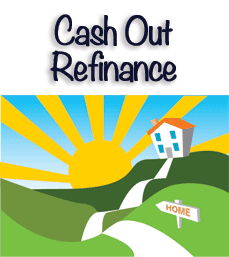 Getting a cash out refinance is the process of refinancing a mortgage for cash. It is based upon the equity in your home, and you can either take it as a single cash sum or as a line of credit. If you have owned your home for a number of years, and a combination of inflation and mortgage repayment has resulted in your home being worth a lot more than you owe on it, you can refinance it to release some of that equity.
Getting a cash out refinance is the process of refinancing a mortgage for cash. It is based upon the equity in your home, and you can either take it as a single cash sum or as a line of credit. If you have owned your home for a number of years, and a combination of inflation and mortgage repayment has resulted in your home being worth a lot more than you owe on it, you can refinance it to release some of that equity.
Here is what s involved in refinancing a mortgage for cash. Many people prefer to make best use of the equity on their home by arranging refinance on their existing mortgage in this way.
Cash Out Refinance
With a cash out refinance, you receive a lump sum cash payment for the value of your home. This leaves you having to renegotiate your mortgage which is part of this process. Your existing mortgage is cleared from the proceeds of your payment, and you keep the equity as a cash sum.
You must then enter into a new loan agreement for the balance to pay on your mortgage when the agreement was made. When you were paid the cash sum, the mortgage company is not buying your home from you, but simply paying the equity. That is the value of your home less the amount you still owe.
Example of Cash out Refinance
Let’ say you purchased your home for $200,000 and its value is now $250,000. You paid a $40,000 deposit and have cleared $25,000 of the principal. You now owe $135,000 and your home is valued at $250,000. Your equity is $115,000. The maximum cash out refinance you can get is for $115,000.
You will theoretically receive $250,000, but $135,000 will be taken to pay off your mortgage. During this process, you will come to a new mortgage agreement based upon the sum that was left to pay. This will be re-amortized over a revised payment period and at an agreed interest rate. In other words, you are in effect cancelling the first mortgage agreement, and setting up a second for the same property.
You are not obliged to take the full amount of your equity, but can retain some as a deposit on the new loan. In the example above, if you take $75,000 in cash, you can use the balance of $40,000 to reduce the amount of the new loan.
Summary on Refinancing a Mortgage for Cash
You get a loan for the full value of your home, and then repay what is left of the existing mortgage from part of the loan proceeds and keep the rest yourself. You then refinance based upon the amount of your loan. This gives you cash to spend, and a new mortgage agreement.
Cash out refinance is based upon the equity of your home: its appreciation in value since you purchased it + your original deposit + the amount of capital you repaid. You take out a proportion of the equity of your property as cash, and pay off what is still owed on the mortgage with the rest. When refinancing a mortgage for cash, you then set up a new agreement to pay the loan which can be less than your original mortgage.


About The Author: Karengustin
More posts by karengustin